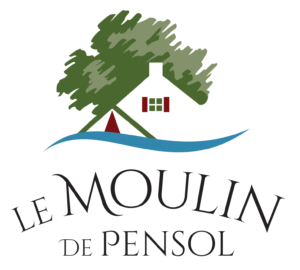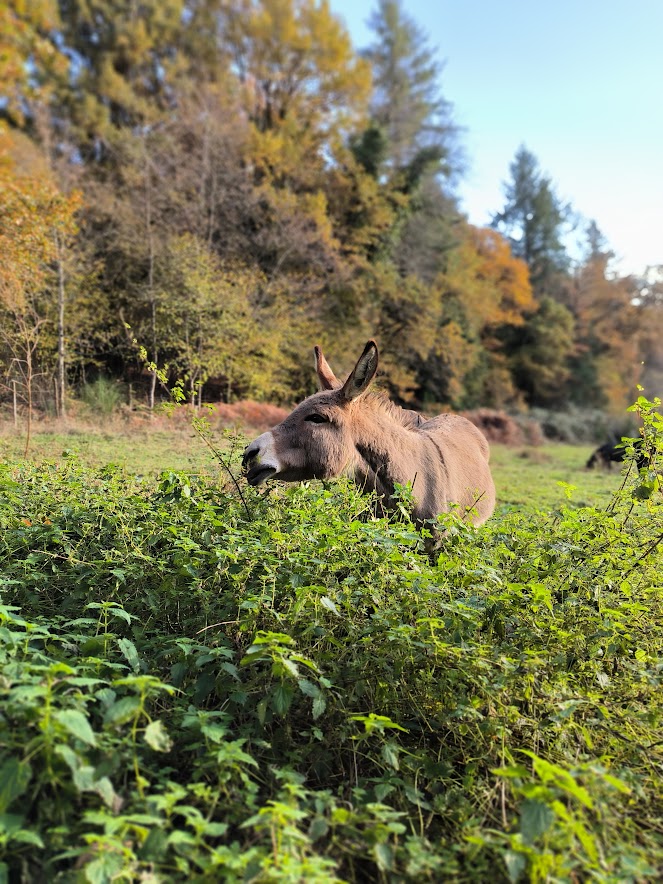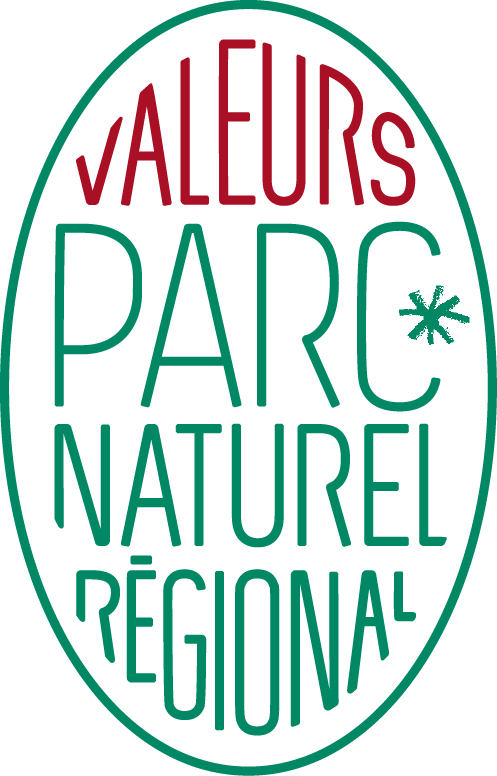I clean a lot of toilets and make a lot of beds. So many in fact, that I just do it on autopilot which leaves me a lot of time with my own thoughts. No one wants to be left with my thoughts, not even me, so I plug myself into BBC Sounds or Spotify and look to entertain or improve myself. I quested for more “nature stuff” and came across James Shooter`s “The Rewild Podcast”. James sets about visiting all of Europe’s great rewilding sites. Europe , it seems, has more wolves and bears than does North America ……. I know, it’s mindblowing! What America has is marketing, and the exclusion of humans from their best known parks like Yellowstone and Yosemite, so it somehow feels more like a “wilderness”. Eagerly I listened to each episode and continued to be amazed at what was going on at landscape levels across the continent of Europe. James visited the 3500 acre (1417Ha) rewilding project at the Knepp estate in West Sussex UK. Knepp is an estate with a castle in the middle of it, and was flavour of the month in all the British conservation press. I had heard of it, of course, but somehow I hadn’t quite made the connection with what we were trying to achieve here.
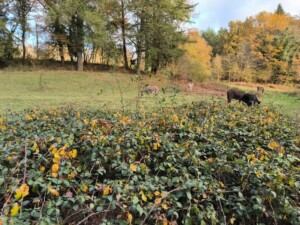
Those who know Le Moulin de Pensol will know we cherish our rich biodiversity. Those who know us well will also know that covid stretched our new start tourist venture to the point of breaking, as we poured in all our savings just to stay afloat. It has been bleak.
During 2022 I had found work as a labourer to bring in much-needed extra funds, but by spring 2023 I was able to stop this and concentrate on our own business. I had read that visitor numbers to France were still 20 million light on the numbers from pre-covid 2019 and this year we had to make ends meet. I am pleased to say it has been our best year ever and we may make it through to next spring and the next season. So once the last toilet of the season had been scrubbed and cleaned to a shine, I was able to look ahead at autumn work that would actually be here, and not at someone else’s place.
During the summer we had an influx of those people that had responded to our adverts in the British Butterfly Conservation magazine in 2019 – yes, three years after they first booked! I would take those interested on tours of the place and the wildlife never let me down. From bats in the cave, a guest who clocked 47 species of butterfly on our land during his 10 day stay in June, to “ ooh look ,lesser spotted woodpecker, the wildlife is right by our gite!” Incidentally our woodpecker species now include lesser, middle and greater spotted, green and black. A full house! However I, on the other hand, was noticing the frightening rate at which brambles were consuming everything and the blueberry rows were all being overshadowed by young trees rocketing up beside them. I almost couldn’t afford to go back to building work in the autumn otherwise we would be swamped by nature`s colonisers and the natural capital of Le Moulin would suffer.
We have 8 hectares which is nearly 20 acres in old parlance. The little river Bandiat runs through it. We sit in a rift valley (a Dr in geology informed me), and it is a mix of outgrown chestnut coppice with douglas fir invaders, dry, thin sandy pasture, ex-arable, a run-down fruit farm and a low, boggy fen. It has huge diversity for such a small site. The weight of responsibility I felt on my shoulders for not letting this gem become a brambly mess was huge. We are surrounded by a brambly mess and so we have enough in the area already. Lots of conservation is about preserving things as they are because often you can’t afford to lose the last vestige of that particular habitat in that particular location, but to my mind, just preserving the status quo was not good enough. The world has gone too far for that already as reserves become tiny fragmented islands leaving their wild populations fragmented, vulnerable and set for genetic oblivion.
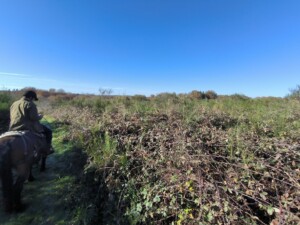

Anyway, back to toilet cleaning and inspiring re-wilding podcasts. We buy hay for our four donkeys, two horses and a mule, year round. This has appalled some of our horsey friends but there are two very good reasons we do it. Firstly it helps with avoiding laminitis – an inflammatory disease of the membranes between the hoof wall and the tender fleshy bit within, caused by eating short, sweet grass. This horrible condition can render them almost immobile with the pain and can be fatal. Secondly it eases grazing pressure on our land as they all go to “bed” in the ex-arable field, which is sacrificed under their hooves in muddy winters to save wear and tear elsewhere.
I had started to clear a mass of bramble and broom scrub in order to claw back some of the ancient flower rich pasture that delivered so many of our butterflies to us. But wait, shock-horror! The podcast was teaching me that Knepp is all about “scrub”. Scrub is the kind of environment that my generation was brought up believing was “wasteland”. Both Heidi and I had been out scrub-bashing with the BTCV in our youths, to help “save” precious habitats. Neither magnificent woodland nor pure pasture, “scrub” is the transition from the latter to the former. It is a jumble of thorny thickets, animal tracks, glades and patches of bare soil as the battle rages between plants growing and plant eaters eating. It is a massively diverse habitat supporting a similarly massive biodiversity. Modern farmed environments don’t look like that anymore. A monoculture maize crop can sit right next to the edge of a woodland with no transitional landscape at all and yet archaeology has revealed that at least a third of an ancient temperate european landscape would have existed in this “transition state” between non-wooded and fully wooded landscapes, something like “wood pasture”. In fact there is an old English saying of “thorn is the mother of oak” which chimes nicely with the expression “trees don’t grow in woods”. Essentially it means that trees will grow best out of a thicket of thorny scrub which protects them from the attentions of browsing animals. Scrub grows best out of protective brambles which grow best in sunlight and not in woods.
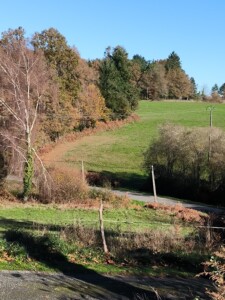

It all made so much sense that I then listened to Isabella Tree`s book “Wilding”, devouring it in days and reeling from the brilliance and simplicity of it all, and how it all made total sense. In summary they are letting nature drive the direction of habitat development, and employ proxies on their old arable farm to mimic, as closely as possible, the variety of keystone animals that would have been around in prehistoric terms. So they fenced their entire perimeter, put cattle grids across the roads, footpaths and bridleways and carefully introduced old English longhorn cattle for bison, fallow and red deer for elk and red deer and Tamworth pigs for wild boar. For beavers they used…..beavers and two years’ work with an excavator to de-canalise the course of the river Adur.
I had been set in the old way of “must cut the sallow scrub to preserve the fen” now I learn that i, along with many others, inherited the “sallow is bad” attitude stemming from the dig-for-victory mantra when scrub was seen as non-productive and not good for much. In fact the sallow or goat willow (Salix caprea) is actually a star of bio-abundance. It ranks third, behind second placed oak and first place birch for the number of species of moth it supports in the uk. It is also the food plant for the caterpillars of one of our star species, the purple emperor butterfly.
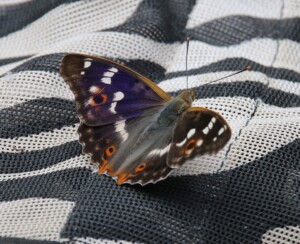

So, armed with this exciting new heap of information, what should I do next? I can’t use the same proxies as the Knepp rewilding project as some of our fences are so non-existent that I have to leave swathes of brambles just to keep the equines in. We have some boar in the area but it has only been this year that evidence of their rootling was found on Humpy Hill and even as close as 5 metres from the gites! The chasse (hunt) do an efficient job of keeping their numbers incredibly low. We have roe and red deer in the area but again they are thoroughly hounded and shot every year. We have no aurochs (the now extinct native wild cattle that roamed europe til the last one was shot in the 17th century) though i could open the gate periodically to let the neighbour`s Limousine beef cattle in i suppose, provided they are not doused in the antiparasitic drug Ivermectin.
So what will I do? Best you wait for part two, three or four of this blog, as I see this now as being a process that may take a long time. We have climate change and species migrations to deal with, but all are welcome to propose ideas as we set off to create a bioabundance at the Moulin de Pensol.
